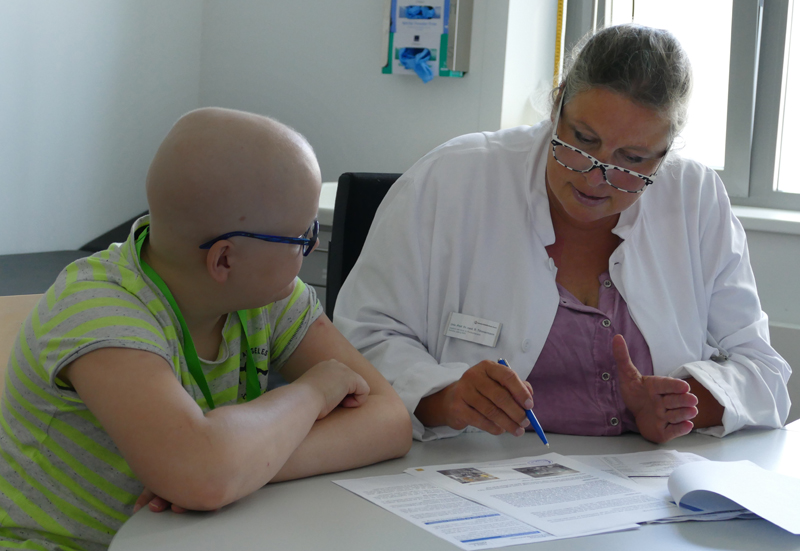
A unique expertise: The paediatric oncological radiation therapy programme at WPE is the largest of its kind in Germany – 1000th child treated
Throughout Germany, around 1,800 children develop cancer every year. About half of them receive radiation therapy. In particular, conformal techniques such as proton therapy are becoming increasingly important in the treatment of childhood tumours. With its paediatric oncology programme – the largest of its kind in Germany – the WPE has outstanding expertise in this field. Almost six years after the opening of the centre, the 1000th child has now been treated.
In addition to surgery and chemotherapy, radiation therapy is now firmly anchored in the therapy concepts of the study protocols of the German Society for Paediatric Oncology and Haematology (GPOH). Not least because the modern possibilities today are both much more effective and much more tolerable than in the past. Proton therapy is becoming increasingly important in this development, thanks to which tumours can be irradiated particularly precisely while sensitive neighbouring structures are spared at the same time. This is an enormous advantage because the immature, healthy tissue of children is particularly susceptible to radiation-induced side effects. “Children are very sensitive to radiation because they are growing. The younger the children are, the greater the risk of impairing normal development,” says Prof. Beate Timmermann, Director of the Clinic for Particle Therapy and Medical Director of the WPE, and adds: “The occurrence of chronic therapeutic consequences can impair the quality of life of children and later adults and should therefore already be taken into account in the decision on the therapeutic concept and radiation therapy planning.
Initial experience shows that the precision of protons in particular potentially reduces the risk of radiation-induced secondary tumours. In fact, the radiation exposure of normal tissue with protons can be significantly reduced compared to conventional radiation with photons. Prof. Timmermann: “In the meantime, proton therapy has therefore been included as standard in the therapy protocols for various indications in the area of childhood tumours”. In principle, however, proton therapy requires a high degree of expertise – which the WPE, as one of only six centres in Germany, can offer with its paediatric oncology programme of international renown. “We are currently receiving referrals from all over Europe and from many places where there are no specialised therapy centres.”
Almost six years after opening, a total of 1,024 children had been treated at WPE by August of this year. The predominant diagnoses: tumours of the central nervous system (CNS) – in principle the second most common cancer in childhood – as well as bone and soft tissue sarcomas. The eleven-year-old Fynn, the 1000th child to start treatment at WPE, suffers from a brain tumour. These are often diagnosed in the vicinity of critical structures such as the brain stem, auditory and optic nerves, which is why a precise dose distribution has proven its worth, as is possible with proton therapy. “Whereas 20 years ago almost all children with brain tumours received almost identical intensive radiation concepts, nowadays in most cases only the primary tumour region is irradiated and no longer the entire CNS, which reduces the risk of damage to the developing brain tissue,” said Prof. Timmermann. Unlike conventional photon therapy, proton therapy does not use high-energy electromagnetic waves, but charged hydrogen ions (protons) that can be precisely controlled at body depth. They first penetrate the tissue and then exert their greatest effect directly in the tumour. Surrounding structures and organs are therefore spared as much as possible.
